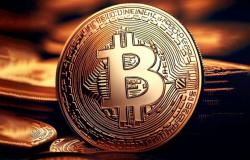IOTA is a cryptocurrency that stands out from others for having the basis of its operation in the Directed Acyclic Graph (DAG) with an architecture called Tangle, while the most famous ones such as bitcoin or ethereum do so through blockchains.
This cryptocurrency, also known as MIOTA, is created to be used as a means of payment with unlimited scalability (transactions) and through all the devices that are part of the internet of things no additional fees.
Unlike the blockchain, in this new scheme each of the records or users has a unique timestamp and must be subject to a cryptographic signature composed of 81 charactersLikewise, each transaction is made through this private key, which does contain details such as the sender, recipient and amount.
The main characteristics of IOTA are: they have no scalability limits, so unlimited transactions can be made; the system adjusts to usage and popularity without being highly volatile; does not require mining or miners; and has no extra fees for trading.
According to information from Binance, this digital currency currently has 3.29B units created.
While the debate becomes more heated every day about the convenience or not of its use, iota is trading this day at 10:30 hours (UTC) at 0.216585 USD, which represents a change of -1.68% regarding the last 24 hours and a variation of -0.04% with reference to its value reached in the last hour.
In terms of its market capitalization, it has maintained the position #112 among cryptocurrencies.
Created by German developers, the digital currency uses a technology or architecture called Tangle focused on the Directed Acyclic Graph (DAG) which, among other things, is characterized by being friendlier, since transactions can be made with just having a cell phone and a computer, while it does not consume as much energy as a blockchain network.
Furthermore, these operations can be carried out by users who operate with IOTA and there are no commissions for operations because its users must make other transactions before materializing their own.
IOTA technology guarantees that users of this cryptocurrency have a more reliable environment than the one that the blockchain network can provide, since the latter allows transactions to be made asynchronously, orderly and slowly for security reasons; while the Tangle allows parallel operations.
The maximum supply that IOTA has is 2 thousand 779 million 350 thousand 283 tokens and The goal is to get microtransactions made up to $0.001 without having to pay payment processing fees. In each operation, the “seed” is required, which is a randomly generated 81-character code that prevents the theft of funds.
Among its advantages is its resistance to quantum computing, millions of times faster than that known today; However, one of its weaknesses is security, since in 2017 it faced a hack that caused a break in its price and a loss in transaction volume.
A virtual currency is a digital medium exchange that does not physically exist and that uses cryptographic encryption to ensure the integrity of its transactions, while maintaining control in the creation of its new units.
Bitcoin was the first to hit the market and was then followed by others that have also had great relevance, such as litecoin, ethereum, IOTA, tether, cash, ripple, decentraland, even some that emerged from memes like dogecoin.
Cryptocurrencies have different characteristics that make them unique: not being controlled by any institution; not requiring intermediaries in transactions; and almost always use accounting blocks (blockchain) to prevent new cryptocurrencies from being created illegally or transactions already made from being altered.
However, since they do not have regulators such as a central bank or similar entities, they are clearly identified as not being reliable, being volatile, promoting fraud, not having a legal framework that supports its users, allowing the operation of illegal activities, among others.
Although it could be a paradox, at the same time cryptocurrencies guarantee security to their miners regarding the network in which it is located (network) and which implies code management; Hacking this security is possible but not so easy to achieve, since whoever tried it would have to have computing power greater than even that of Google itself.
To acquire and exchange them you can through specialized portals. Its value varies depending on supply, demand and user commitment, so it can change faster than traditional money, but the more people are interested and want to buy a certain currency, the higher its value will be.
However, whoever invests in this type of digital currencies must be very clear that this form brings with it a high risk to capitalWell, just as there can be an increase, it can also unexpectedly crash and wipe out the savings of its users.
To store them, users must have a digital purse or wallet, which is actually a software through which it is possible to save, send and transact cryptocurrencies. In reality, this type of wallet only stores the keys that mark a person’s ownership and right to a certain cryptocurrency, so these codes are the ones that should actually be protected.






